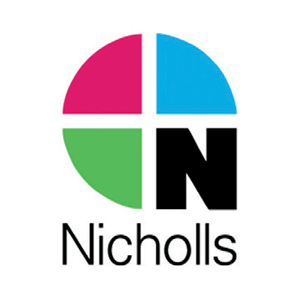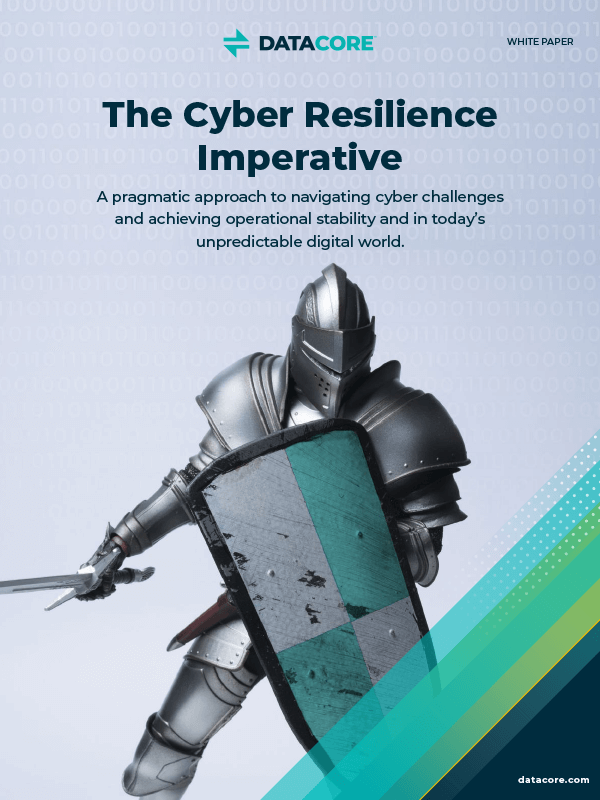UK based John Nicholls Group is one of the leading independent building and plumbing merchants serving both trade and the public across the counties of Oxfordshire, Warwickshire and Buckinghamshire and more recently, acquiring a sister plumbing company on the South coast.
The companies supporting IT infrastructure is delivered to nine branches and four showrooms through thin client terminals from the Adderbury HQ server room. From here, Cal Letts, IT Support Manager, John Nicholls Group, strives to deliver continuously available business systems and storage to 230 employees.
“Our business sales model is primarily driven through counter based delivery, alongside phone ordering. Where others have moved to solely e-trading, at John Nicholls we have successfully grown our business through increased personal interactions and extra service levels that face-to-face trading brings.” Says Cal. “But we live in a time sensitive digital age, so counter service has to be delivered with fast accuracy. We have come to rely on DataCore to power that performance, whatever the app it is serving.”
Rollback 8 years, in 2011, John Nicholls were suffering from a creaking IT infrastructure that stretched the small IT team. Taking advice from their incumbent IT partner, John Nicholls became an early SMB adopter of virtualisation for their servers.
Additionally, the partner defined that to ably support and ring-fence their resultant VMware Virtual Machines (VMs), John Nicholls should adopt Software Defined Storage to provide Virtual Disks for their storage that would pool, mirror and serve disk blocks across John Nicholl’s existing Direct Attached Storage (DAS).
Unable to spend vast sums, John Nicholls selected DataCore’s SDS solution due to its unhindered iSCSI connectivity and in the knowledge that DataCore’s software layer would give the much-needed storage performance but at fraction of the cost of proprietary systems.
John Nicholls concluded that future costs would also be curtailed as DataCore’s hardware independence would allow future usage of commodity storage.
2012: SDS First Rollout and Night and Day Performance Boosts
Rollout commenced and DataCore’s performance advantage quickly materialised boosting the speed of data access and data manipulation within the Microsoft Navision SQL server used for transaction processing. The impact was so noticeable largely due to the caching algorithms within SDS now conducting bulk reads at lightning speeds while shielding users from known inefficiencies within Navision.
“Caching is where it all started. It was nothing short of a dramatic night and day increase in the before and after speeds on processing transactions with DataCore running at the backend.“
Cal recalls. “Somehow you learn to accept slow performance as a consequence of database crunching, but it’s not until it’s turbo charged – and in this case, by simply by adding a software layer to what’s already in place – that you question why it hadn’t been done sooner!”
He laughs. And, the resultant knock on effect to the business of the DataCore performance boost at the back end? Customers were served more efficiently at the store counters and on the phone, giving greater customer service and achieving staff serving efficiencies. The benefits didn’t end with performance. With DataCore, Cal and the IT team of two received central management of their virtual estate in the virtualisation switch over.
No longer did the IT team have to physically run round and manage and administer devices or swap out disk drives. Instead, they quickly embraced the point and click icons within DataCore’s centralised GUI, allocating storage and thin provisioning space as needed, allowing John Nicholls to maintain and provision required disk storage on the fly. With heavy trading across the weekends and from 7am to 5.30pm each weekday, little time was left for network maintenance, upgrades or expanding virtual disks among the virtual machines.
Using DataCore, John Nicholls moved from routine scheduled out of hours maintenance regimes into working and responding in the moment. Maintenance means that John Nicholls simply takes over one side of the DataCore mirror without trading interruption, installs patches and upgrades, brings the mirror backup automatically and resumes trading. While, for adding new VMs, Cal can rapidly provision these from his central store of golden images in minutes.
“At the time the move to Software Defined Storage in an environment our size was a big jump but with hindsight we couldn’t recommend another route. We quickly grasped that software was the future so we took the time to become fully trained and gain DataCore’s DCIE top level of certification so that we could maximise our install. That course served as a great foundation for our knowledge, growth and successful use. Seven years on, we are still self-optimising and tweaking with confidence and we face migrations and upgrades without issue.”
Reduced Cost, Increased Peace of Mind:
Being truly vendor agnostic for storage has realised long-term Capex savings for John Nicholls as DataCore now pools and mirrors their disk blocks across any available devices, regardless of make, model or age – additionally extending the life of storage hardware that would have been deemed redundant. Ultimately, Cal concludes, DataCore’s success has not just been about performance and price.
Long-term, DataCore usage has also achieved peace of mind and reassurance for data and critical apps and business continuity in the server room. Recalling an occasion a couple of years back when a faulty network lead led to one ESX server failing completely, thanks to DataCore’s seamless intervention, the business and the IT team initially didn’t notice.
DataCore’s other half of the mirror seamlessly kicked in without intervention and resumed dealing with both data and path. As a further preventative measure for business continuity, Cal has also taken fast disk ‘snapshots’ of his 20 virtual machines that would facilitate rapid recovery of all VMs should a problem arise. These snapshot images on applications are stored for high availability.
John Nicholls are also aware that, if required, they can use the software’s continuous data protection (CDP) feature to enable users to roll back back in time and recover the state of virtual machines, files and disk storage, back to the same state prior to disruptions, a ransomware attack, or data corruption.

